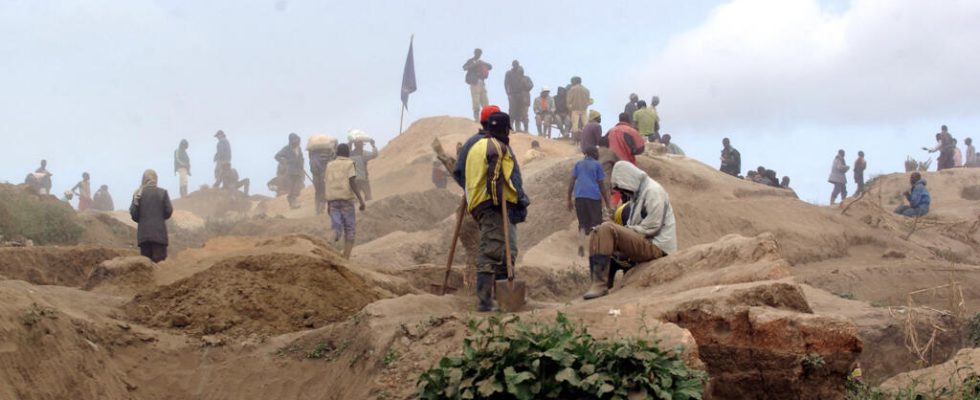It is often said that the Democratic Republic of Congo is a real geological scandal, as its mining resources are so important and diverse. Gold, diamond, copper, coltan, cobalt… The Congolese subsoil is one of the richest on the planet. And yet, these reserves are largely underexploited.
3 mins
In total, around fifty minerals are present in the country’s subsoil. But only a dozen of these minerals are exploited, either because of their low commercial value, or because their exploitation is difficult and expensive, or even because of insecurity.
Most of these minerals are found in the south and east of the country. Gold in Ituri, North and South Kivu. Of diamond in Kasai, the Sankuru. Copper and cobalt in Haut-Katanga and Lualaba. Coltan in North and South Kivu, Maniema, Tanganyika. The country also has lead (Haut-Katanga), uranium (Haut-Katanga), tin, zinc, manganese, coal, oil, lithium.
Digital Minerals
Among these most coveted resources: so-called digital minerals, that is to say used in electronics. With, in the lead, cobalt, a rare mineral, strategic for the ecological transition, since it is used in the manufacture of batteries for electric vehicles. The DRC has the largest cobalt reserves in the world, located mainly in the provinces of Haut-Katanga and Lualaba.
Another strategic mineral for the DRC: coltan, also used in electronics. The country holds more than 50% of world reserves. The exact quantity is not known, due to lack of geological data. According to the Congolese Ministry of Mines, last year the country produced more than 2,000 tonnes of coltan. When we talk about coltan, we are also talking about cassiterite, also used in electronics. Last year, the country produced a total of more than 28,000 tonnes of cassiterite.
But the DRC’s main mining resource is copper, used in the manufacture of electrical cables and wires, electronic chips and electronic circuits. The country is the world’s second largest producer of copper behind Chile, with almost 2.4 million tonnes of copper produced last year. A record!
Green energy
With the transition to green energy, demand for certain minerals is expected to continue to grow in the coming years. For example, cobalt. Today, 80% of cobalt is used to manufacture telephone and computer batteries, but increasingly batteries for electric vehicles, bicycles or cars. A cell phone battery contains between 5 and 10 grams of cobalt. That of an electric car: 5 to 10 kilograms.
So, what do all these mineral resources bring to the Congolese state?
Last year, all mining production generated around $24 billion in turnover, a third of which must land in state coffers, according to the Mining Code. Large-scale mining contributes 20% of gross domestic product, while the artisanal sector employs nearly a million people. The DRC is therefore sitting on enormous potential, believes Congolese geologist Léon Mu-pépélé for whom the Congolese subsoil is still far from having revealed all its secrets.
See alsoElections in the DRC: an XXL ballot
